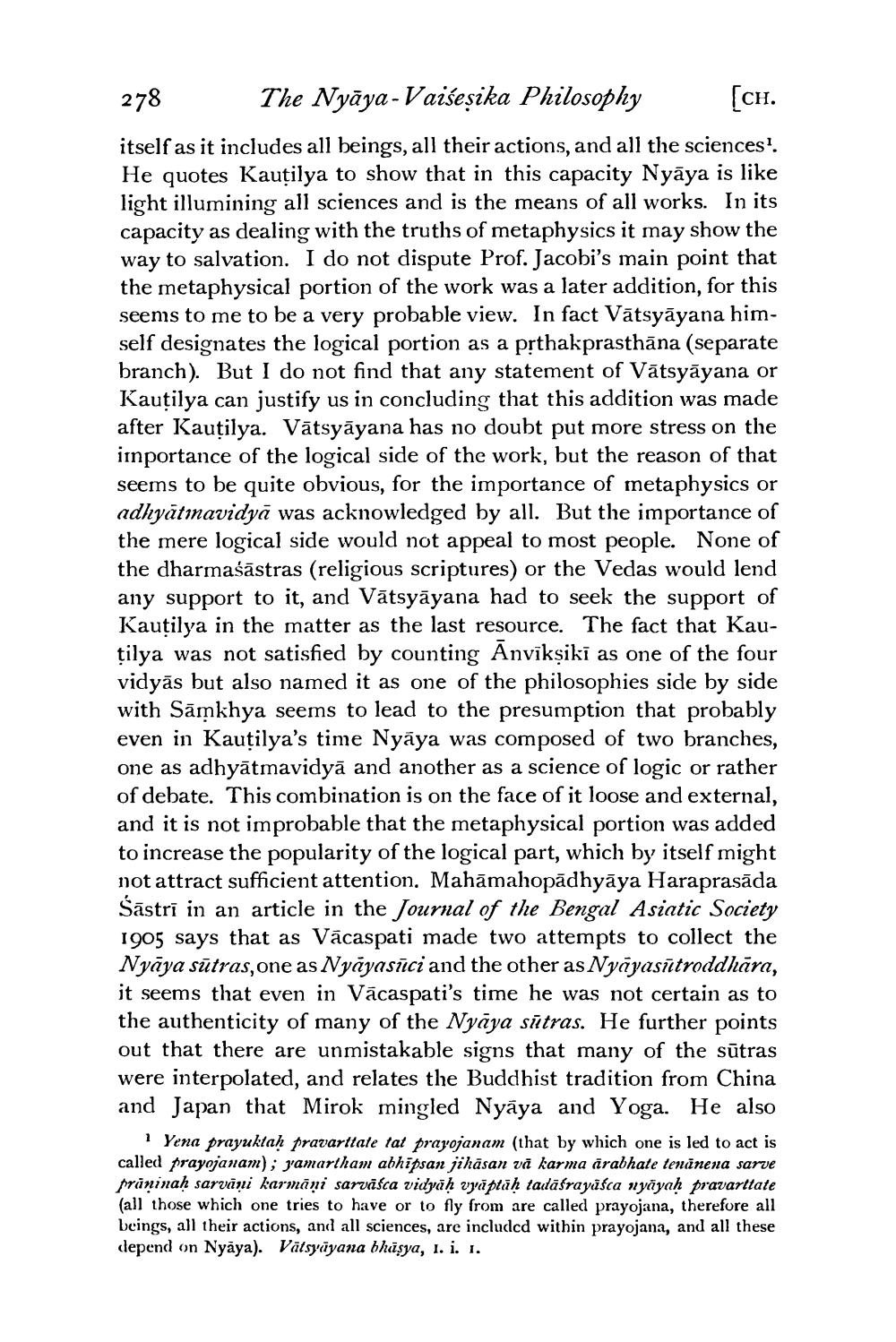________________
278
The Nyāya-Vaišeșika Philosophy
[CH.
itself as it includes all beings, all their actions, and all the sciences'. He quotes Kautilya to show that in this capacity Nyāya is like light illumining all sciences and is the means of all works. In its capacity as dealing with the truths of metaphysics it may show the way to salvation. I do not dispute Prof. Jacobi's main point that the metaphysical portion of the work was a later addition, for this seems to me to be a very probable view. In fact Vātsyāyana himself designates the logical portion as a prthakprasthāna (separate branch). But I do not find that any statement of Vātsyāyana or Kautilya can justify us in concluding that this addition was made after Kautilya. Vātsyāyana has no doubt put more stress on the importance of the logical side of the work, but the reason of that seems to be quite obvious, for the importance of metaphysics or adhyātınavidyā was acknowledged by all. But the importance of the mere logical side would not appeal to most people. None of the dharmaśāstras (religious scriptures) or the Vedas would lend any support to it, and Vātsyāyana had to seek the support of Kautilya in the matter as the last resource. The fact that Kautilya was not satisfied by counting Anviksiki as one of the four vidyās but also named it as one of the philosophies side by side with Sāmkhya seems to lead to the presumption that probably even in Kautilya's time Nyāya was composed of two branches, one as adhyātmavidyā and another as a science of logic or rather of debate. This combination is on the face of it loose and external, and it is not improbable that the metaphysical portion was added to increase the popularity of the logical part, which by itself might not attract sufficient attention. Mahāmahopādhyāya Haraprasāda Šāstrī in an article in the Journal of the Bengal Asiatic Society 1905 says that as Vācaspati made two attempts to collect the Nyāya sūtras, one as Nyayasīci and the other as Nyāyasūtroddhāra, it seems that even in Vācaspati's time he was not certain as to the authenticity of many of the Nyāya sūtras. He further points out that there are unmistakable signs that many of the sūtras were interpolated, and relates the Buddhist tradition from China and Japan that Mirok mingled Nyāya and Yoga. He also
Yena prayuktah pravarttate tat prayojanam (that by which one is led to act is called prayojanam); yamartham abhipsan jihāsan vā karma ärabhate tenānena sarve praninaḥ sarvāṇi karmāni sarvāśca vidyāḥ vyāptūḥ tadāfrayāśca nyayah pravarttate (all those which one tries to have or to fly from are called prayojana, therefore all beings, all their actions, and all sciences, are included within prayojana, and all these depend on Nyāya). Vätsyāyana bhusya, 1. i. 1.




